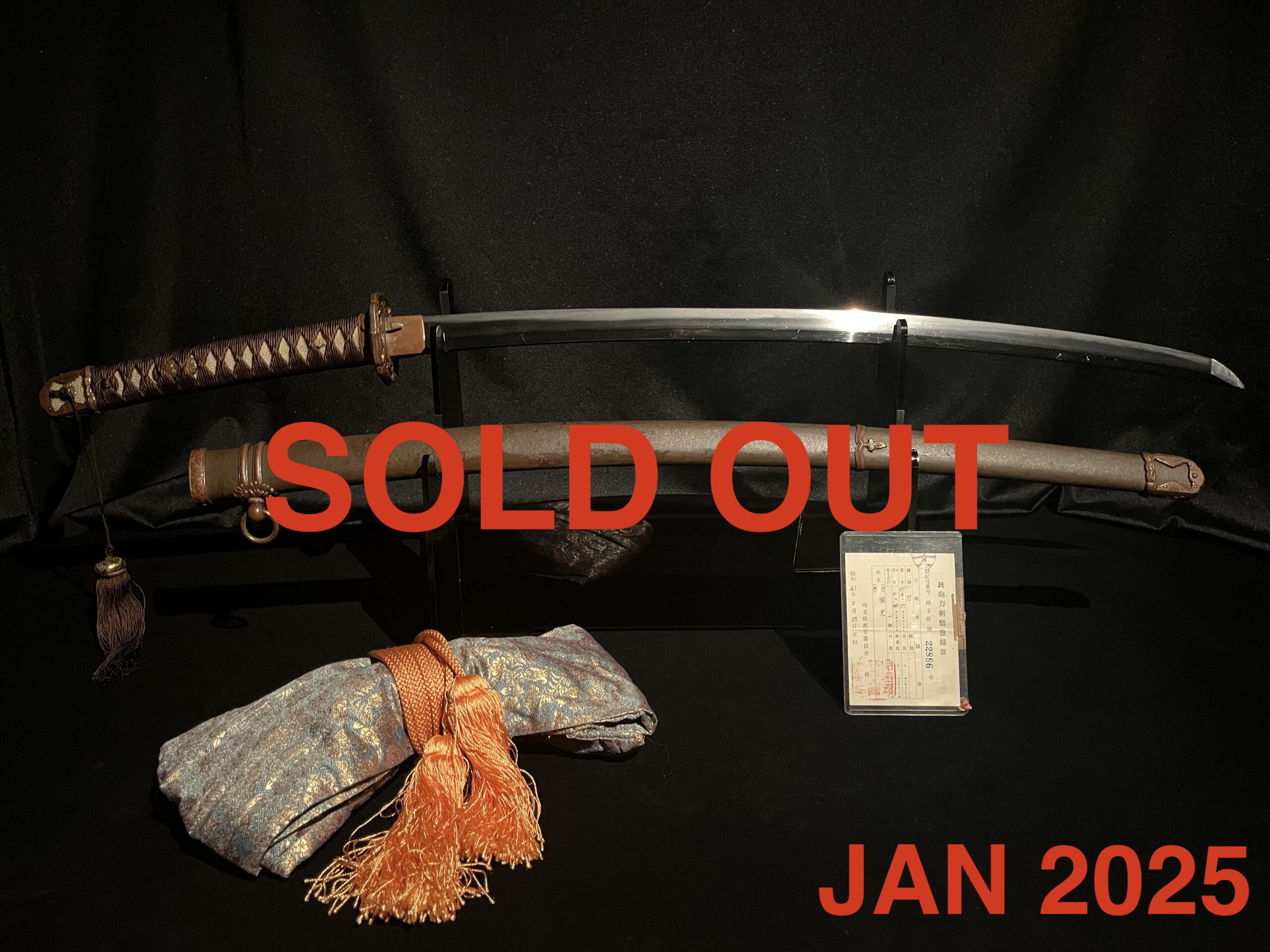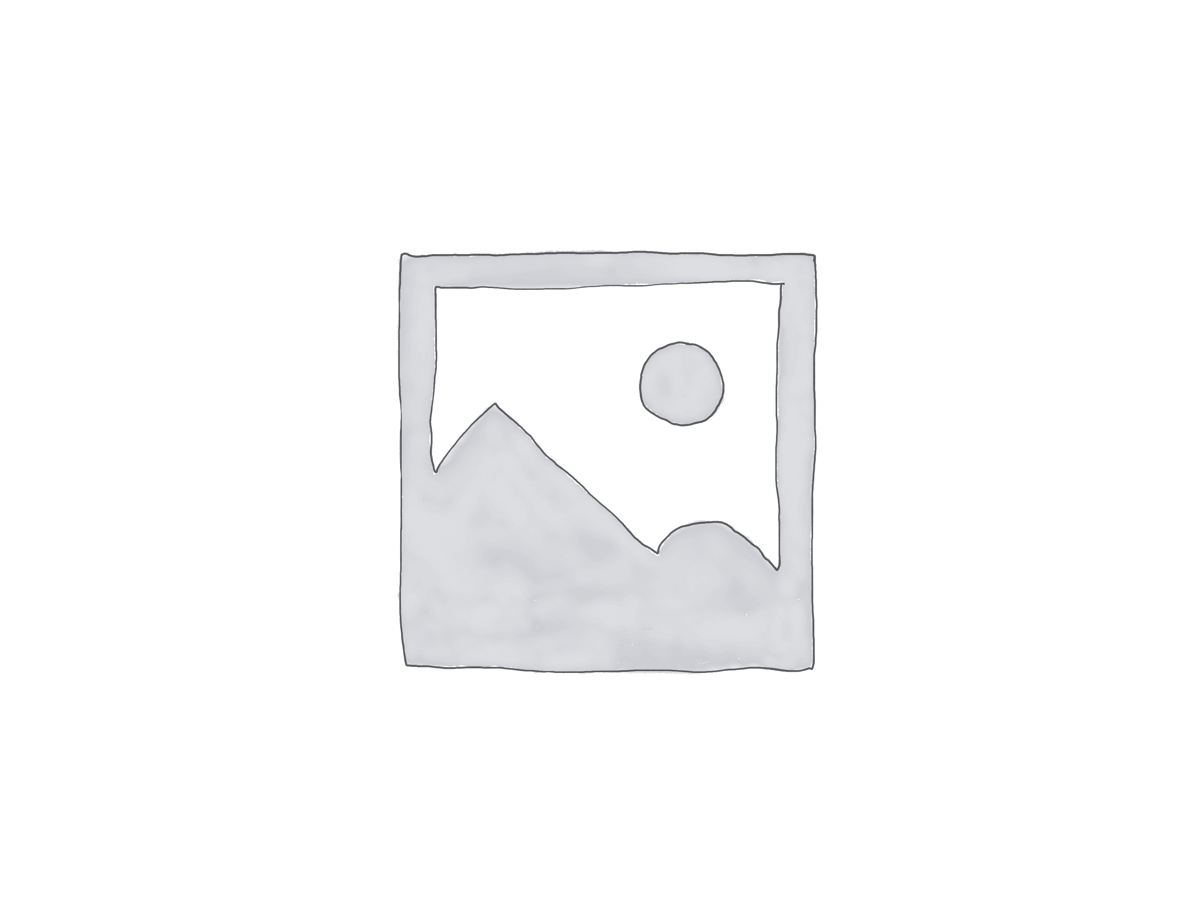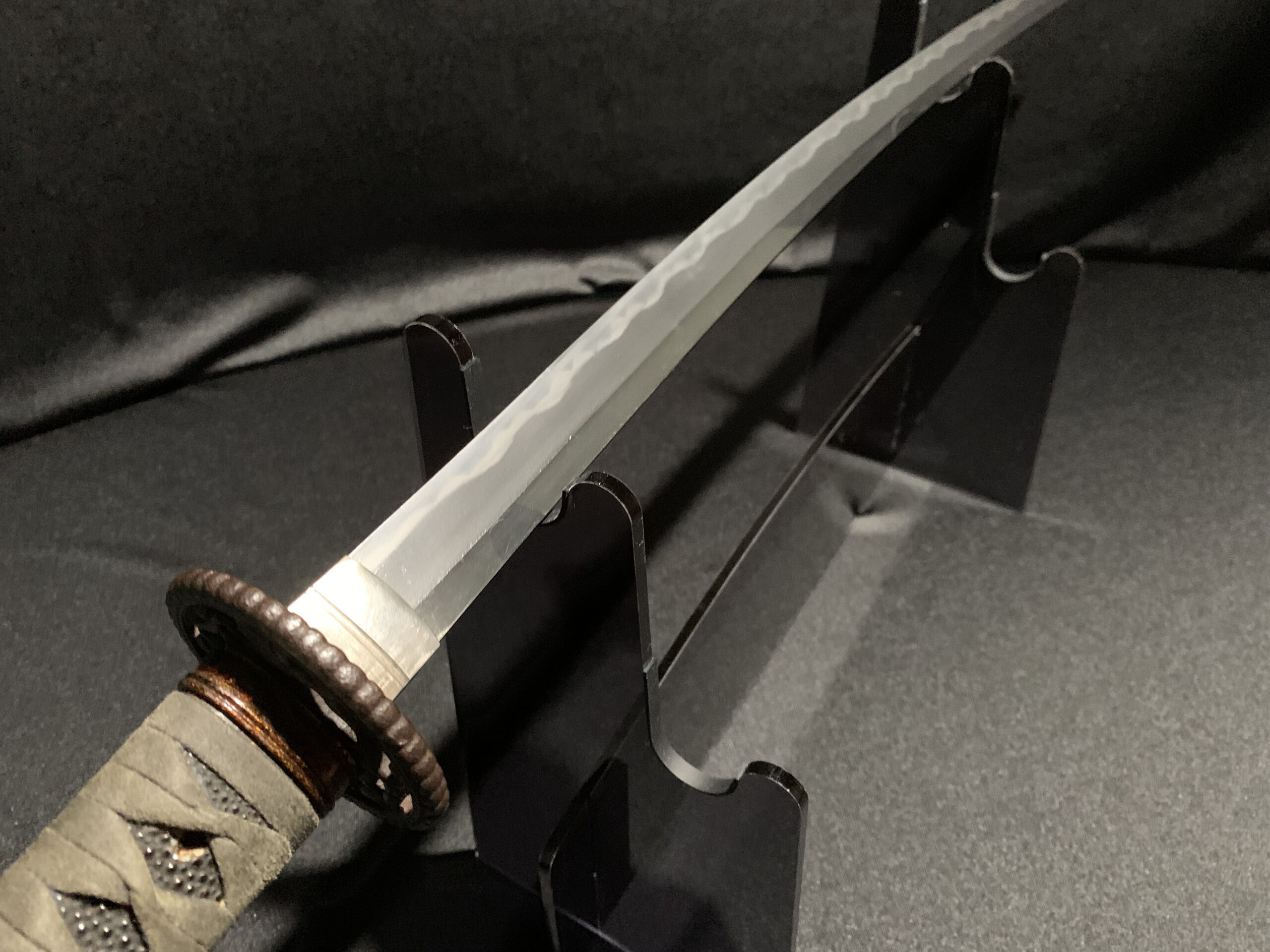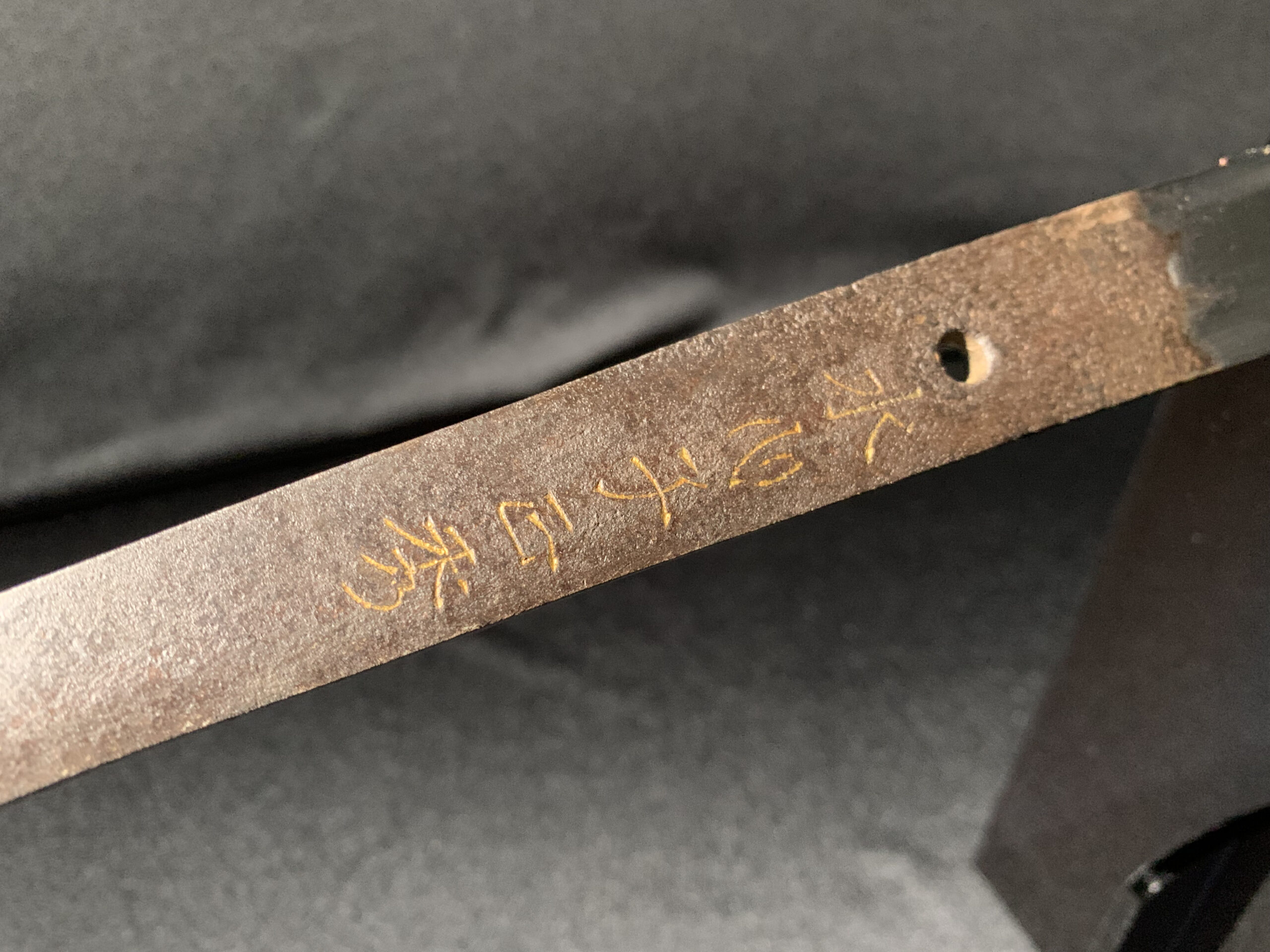
【コピー用】Tegai(手掻)-NBTHK Tokubetsu Hozon Token(特別保存刀剣)-(1288-1460)-Authentic Katana
¥ 2,100,000
在庫1個
説明
From the Katana Enthusiast
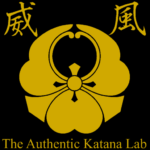
手掻派は大和五派に数えられる、大和伝を代表する流派です。こちらの刀は刀身だけで70cmと迫力があり、拵えも太刀拵で美しく見事な造りをしています。さらに、特別保存刀剣の評価を受けるほど出来が良いので、正直非の打ちどころがありません。必ずやあなたのお気に入りの1本になることでしょう!
Katana Certificate of Authenticity and Registration
This Katana has been certified as a “Tokubetsu Hozon Token(特別保存刀剣)” by the most prestigious organization, NBTHK(The Nihon Bijutsu Token Hozon Kyokai).
“Tokubetsu Hozon Token(特別保存刀剣)” is a higher grade than “Hozon Token(保存刀剣)”
The certificate paper is included in the set.
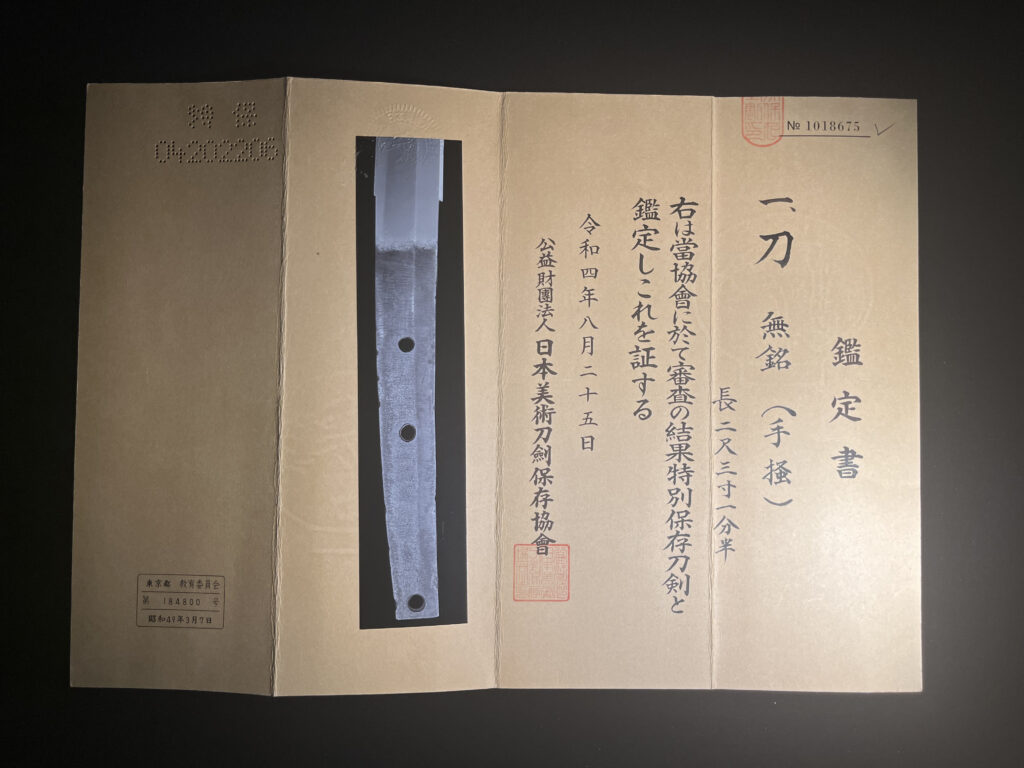
Authentic Katana are registered with the board of education of each prefecture. The original registration certificate cannot be sent as it must be returned to the Board of Education, but we will send you a copy enclosed.
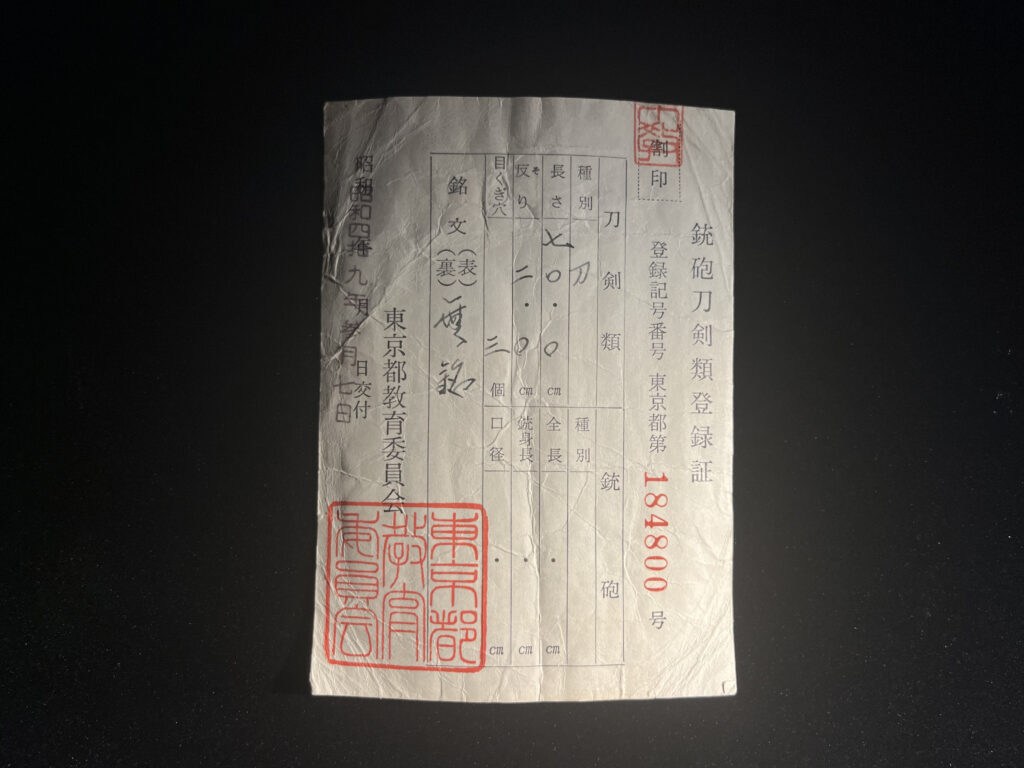
Each part of the Katana
1. Toshin(刀身)
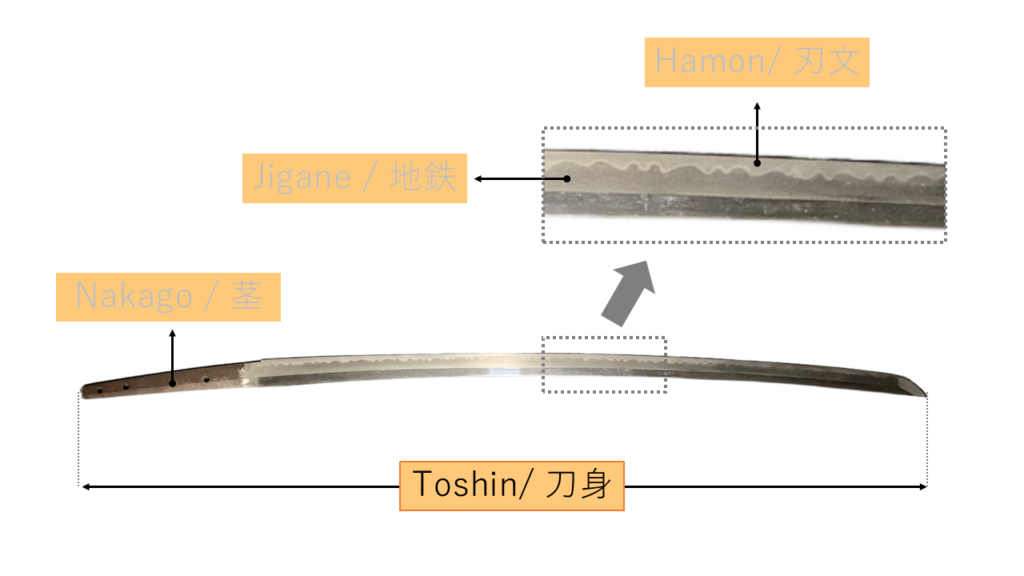
Toshin means the entire blade of a sword.
The length, of course, and especially the sori (how curved it is) is an important point in appreciating Katana.
The sori allows the Japanese sword to be unbreakable and unbendable. Furthermore, it can effectively cut objects with less force.
The detailed theory is explained in the article below, if you are interested.
【Toshin of this Katana】
ここに刀身のギャラリー
Koshirae Full length: 106.9cm
TOTAL Length : 88.0cm
Blade length: 70.0cm
Width(Motohaba) : 2.9cm
Thickness(Motokasane) : 0.7cm
Weight : 0.7kg
Curvature: 2.0cm
Toshin is in excellent condition.
2. Hamon(刃文)
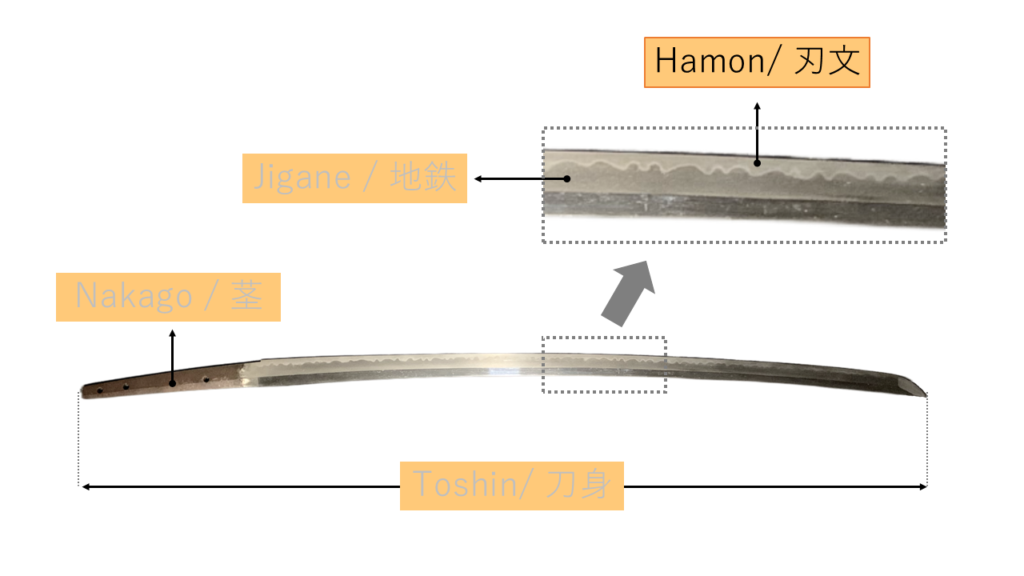
Hamon is a white wave-like pattern that appears on the edge of Authentic Katana blade.
Hamon is divided into two main types: the straight “Suguha” and the wavy “Midareba”.
Although it will be further classified in detail, Hamon is one of the important appraisal points because it represents the characteristics of the swordsmith.
It is also recommended to find Authentic Katana with the Hamon of your choice, as it is an element that is easy to enjoy visually.
【Hamon of this katana】
ここに刃文のギャラリー
This Authentic Katana is a gem that allows you to enjoy Tegai’s signature Suguha!
3. Jigane(地鉄)
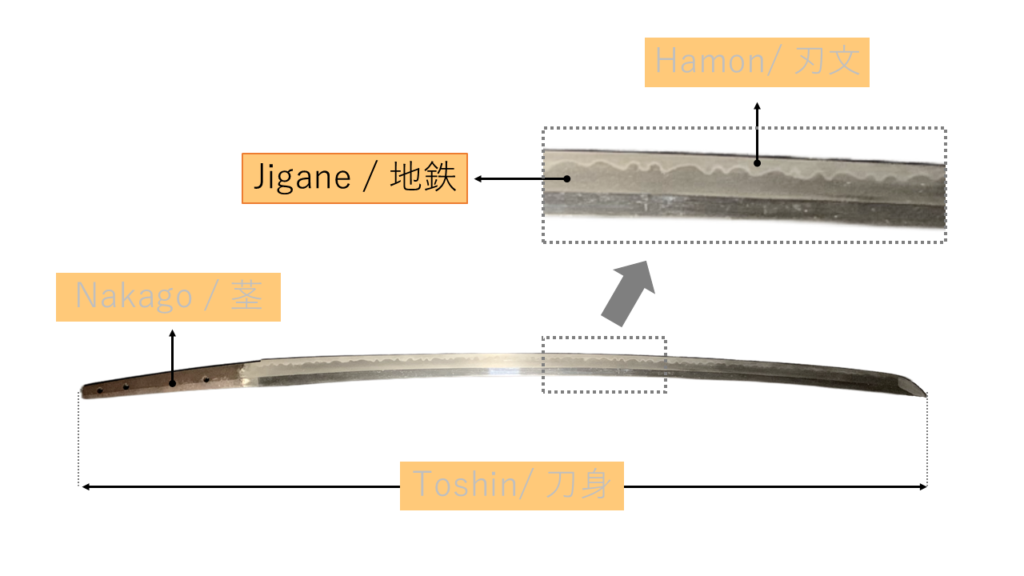
Jigane is a delicate pattern found on the surface of Katana. It appears when “tama-hagane-steel” made from iron sand, the raw material, is folded and smelted.
Each Katana has its own original pattern, which we can enjoy.
【Jigane of this katana】
ここに地金のギャラリー
This authentic katana is well forged and shows the high skill and passion of the swordsmith.
4. Nakago(茎)
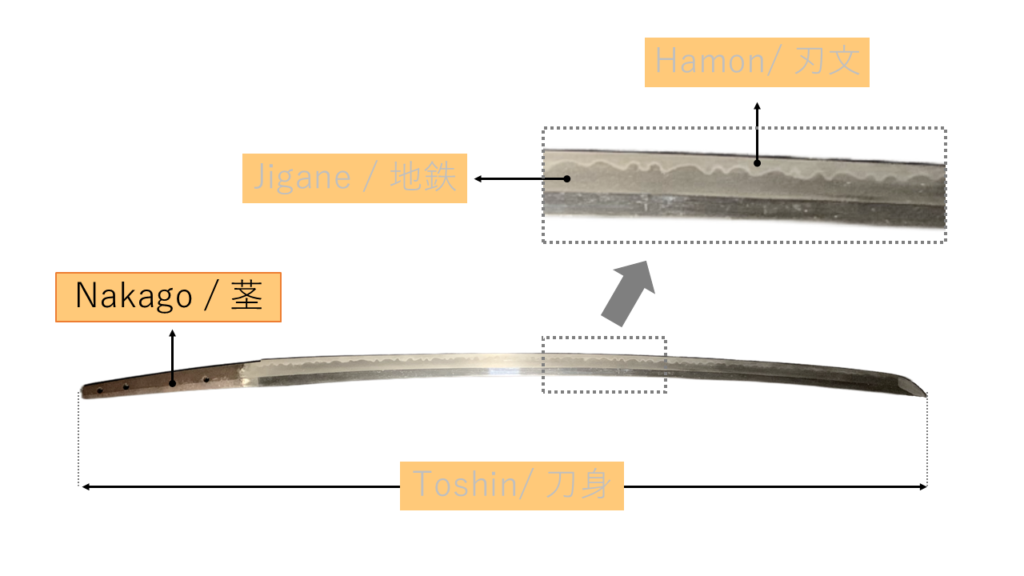
Nakago is the grip part of Authentic Katana.
It is often engraved with a mei (銘) that contains information such as the swordsmith’s name and the date of production.
【Nakago of this katana】
ここにnakagoのギャラリー
There is no Mei engraved on this Authentic Katana, but it is authenticated as Tegai by NBTHK, the most authoritative appraisal organization in Japan.
5. Tsuba (鍔)
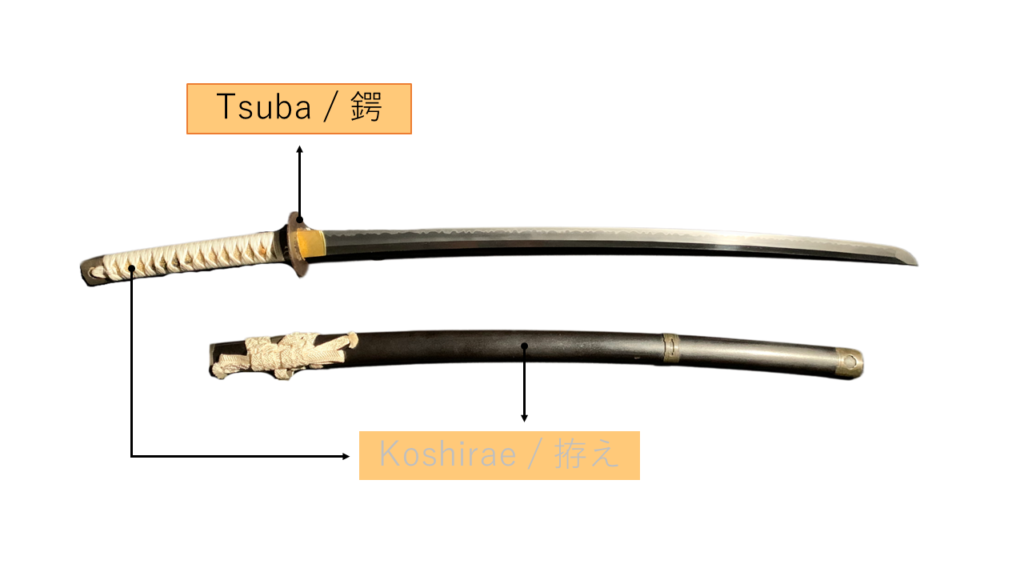
Tsuba is a metal fitting between Toshin and the handle that protects the hand holding the handle from the enemy’s blade when slashing with the opponent. Conversely, it also prevents your hand from slipping toward the blade when slashing with the Katana.
Furthermore, it also serves to adjust the center of gravity of the Katana.
There are many types of Tsuba, some of which are decorated and have value not only as a practical item but also as a work of art. Some Tsuba alone are designated as national important cultural properties.
【Tsuba of this katana】
ここにtsubaのギャラリー
This Tsuba is a simple shade of color, but it is beautifully cut out to not only perfectly adjust the sword’s center of gravity, but also to create a sophisticated design.
6. Koshirae(拵え)
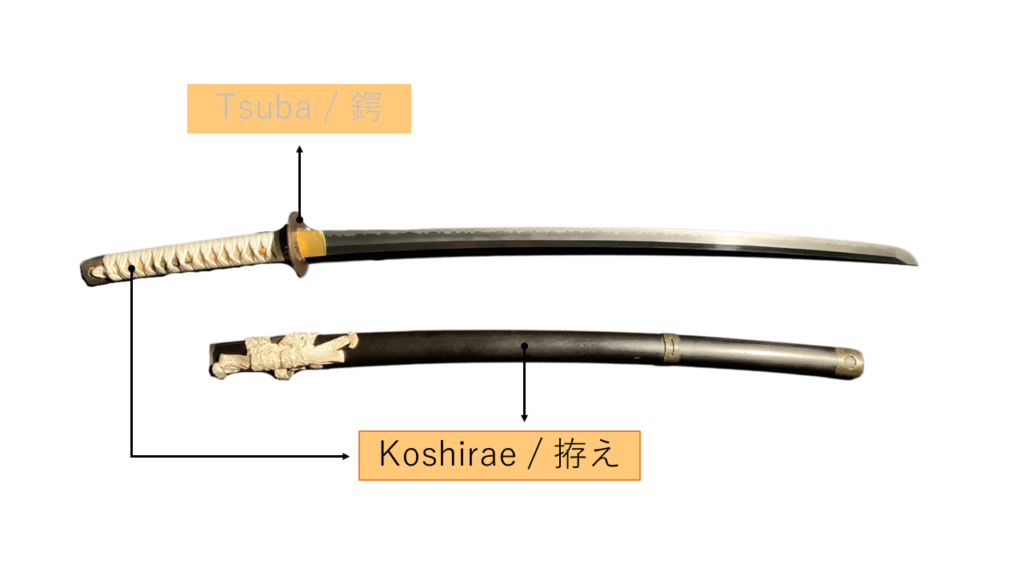
Koshirae is a generic term for the exterior of a Katana, including the handle, Tsuba, and scabbard.
Koshirae are broadly divided into Uchigatanakoshirae(打刀拵) and Tachikoshirae(太刀拵). Since each Katana is different in length and curvature, a unique Koshirae is made to suit each Katana.
The koshirae itself is an important work of art. We hope you will enjoy it with your Katana.
【Koshirae of Tis Katana】
ここにkoshiraeのギャラリー
Koshirae of this work is Tachikoshirae(太刀拵).
“Tachikoshirae” is a type of Koshirae used for tachi swords. It is used to hang it from the waist with the blade facing down. This form of Tachikoshirae was adopted because the main style of swordsmanship was to fight on horseback.
This type of Katana is most commonly seen between the mid-Heian period and the early Muromachi period (1333-1573).
About Tegai School(手掻派)
1. Overview
The Tegai school was active in Yamato Province from around 1288 (the end of the Kamakura Period) to 1460 (the end of the mid-Muromachi Period).
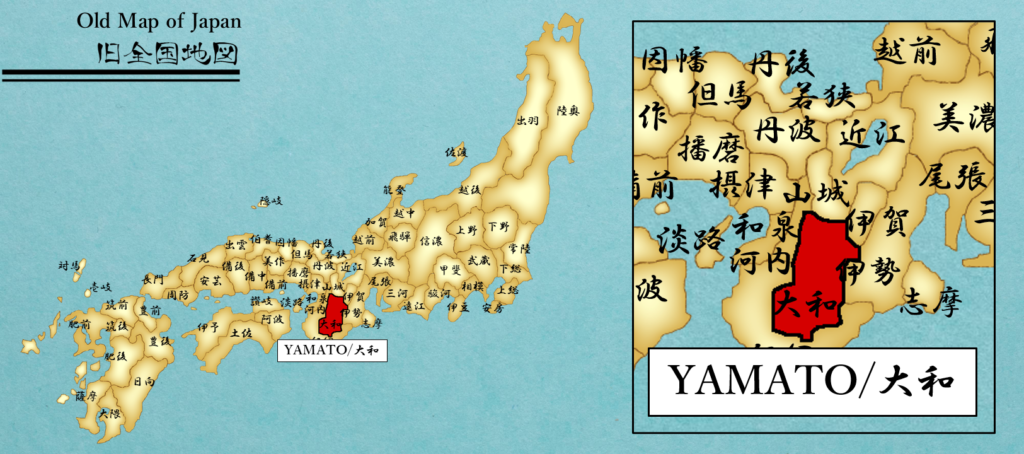
In a larger framework, the Tegai school belongs to the “Yamato-den(大和伝)”. Yamato-den is one of the five ancestral styles of swordsmanship in Japan, and is the oldest style developed in what is now Nara Prefecture since the Heian period (794-1192).
The Tegai school is one of the five official Yamato five schools(called Yamato-Goha). It is an important part of the history of sword making in Japan. Yamato-Goha consists of the Senjuin school, Taima school, Shikkake school, Tegai school, and Hosho school.
2. Genealogy of Tegai School
The founder was “Kanenaga” (包永), also known as “Heizaburo(平三郎)”. In the early days, the sword was sometimes inscribed with the name “Kanetoshi (包利)”. He was one of the most famous swordsmiths in Yamato-no-kuni and produced many famous swords, symbolizing the Tegai school of swordsmithing.
He produced the famous “konotegashiwa(児手柏) ” (a sword that was destroyed by fire in the Great Kanto Earthquake of 1923) and a Tachi sword in the Iwasaki family collection (a national treasure).
3. Characteristics of Tegai School Katana
The Tegai school’s style is consistent, and all pieces have a very good balance of sori, width, and thickness. The Shinogi(the stripes on the side of the blade) is high and the Shinogi width is wide, which is characteristic of Yamato-Katana.
Buyer’s Tips
Authentic Katana are limited in number and we want this to be received by a great buyer who deserves to hold it in their hands.
Before purchasing an item, please review the buyer’s guide here.
Shipment
1.Time required for delivery
This is a truly domestic Japanese sword that has never left Japan. To export, we need to obtain an export permit from the Agency for Cultural Affairs.
It takes about 25 business days from the time the buyer makes payment to the time the transportation process begins.

It takes approximately 7 to 20 days from the time of shipment to arrival, depending on the destination country.
2.shipping charges
Shipping is free of charge.
Basically, we ship to any country except China and Russia.
3.Regarding imports
Please check with your local customs authorities regarding the importation of Japanese swords. We are not responsible for items held or rejected by customs in the destination country.
Please refer to the following page for more information on shipping.
Payment
You can pay through the PayPal link below or transfer the money to the bank account below.
All prices are tax-exempt and do not include Japanese consumption tax.
This applies to international purchases only.
Please note that customs duties or import taxes may apply depending on your country’s regulations. Buyers are responsible for any such charges.
direct payment by bank transfer
Frequently Asked Questions (FAQ)
If you have further questions, feel free to contact us directly.
Do you ship internationally?
Yes, we ship authentic Japanese swords worldwide. Even if we do not have a delivery record to your country, we will do our best to arrange secure delivery.
Currently we do not ship to China or Russia.
Is shipping really free?
Yes. All listed prices include complimentary international shipping. No additional delivery fees will be charged.
How long will it take to receive my sword?
Because we must obtain export approval from Japan’s Agency for Cultural Affairs, it takes about 25 business days to begin shipping. Including transit time, please allow 1–2 months for delivery.
Are the swords already exported items?
No. Every sword we offer has remained in Japan since its creation and is being exported for the first time.
Are the swords legally exported?
Absolutely. We follow all Japanese regulations and obtain official export permits before shipment.
Do I have to pay customs duties or taxes?
Import duties or taxes may be levied by your country’s customs authority. Buyers are responsible for any such charges. Please check locally in advance.
Can I return a sword after purchase?
Returns and exchanges will not be accepted unless agreed upon between the Company and the User.
How do you select the swords you sell?
Our team consists of katana enthusiasts with backgrounds in metallurgy and history. We hand-select each blade for authenticity, condition, and cultural value.
How can I trust that the sword is real?
All swords are genuine antiques, many with registration or appraisal documents. We do not handle replicas or mass-produced blades.
Are these swords actually sharp and functional?
Yes. Our swords are authentic Japanese katana forged by traditional methods and possess a level of sharpness that has been revered for centuries. They are not decorative replicas—they are real blades capable of cutting. Please handle with the utmost care to avoid injury or damage.
I’m looking for something specific. Can I request it?
Certainly. Please contact us with your requirements—design, smith, school, era, condition—and we will be happy to assist.

